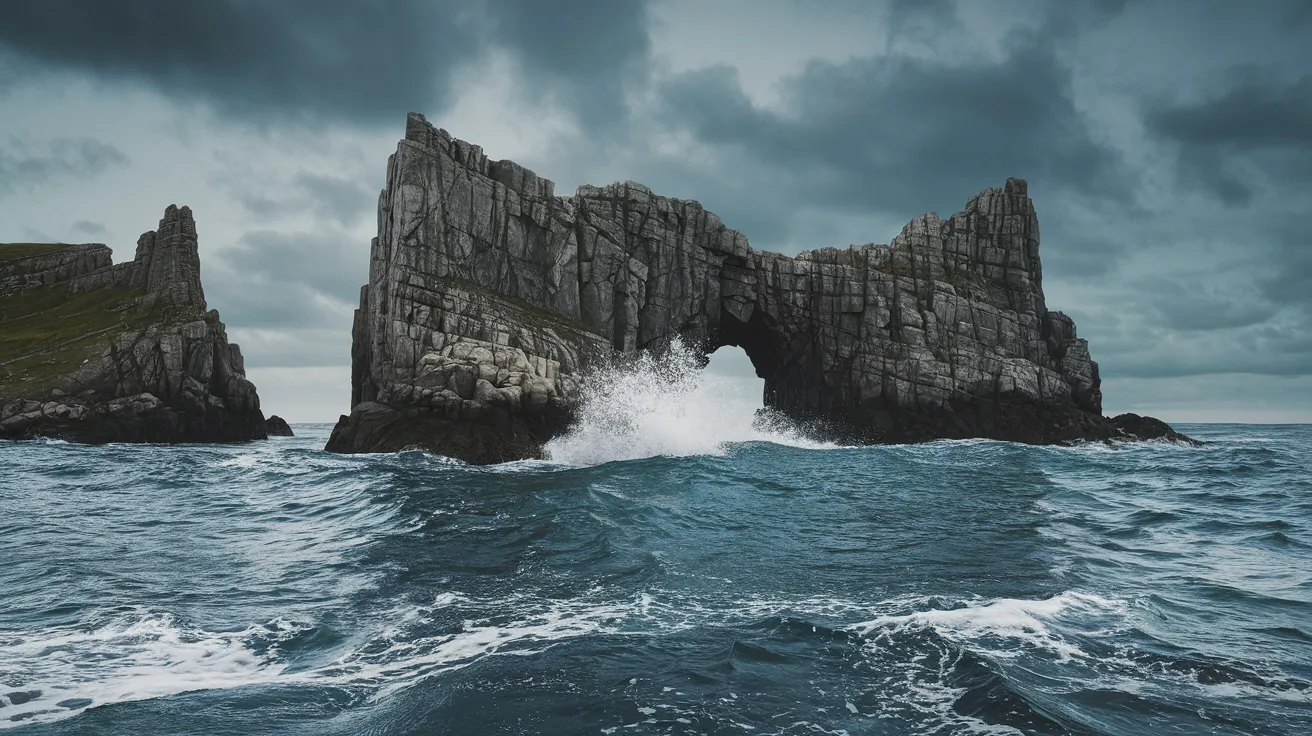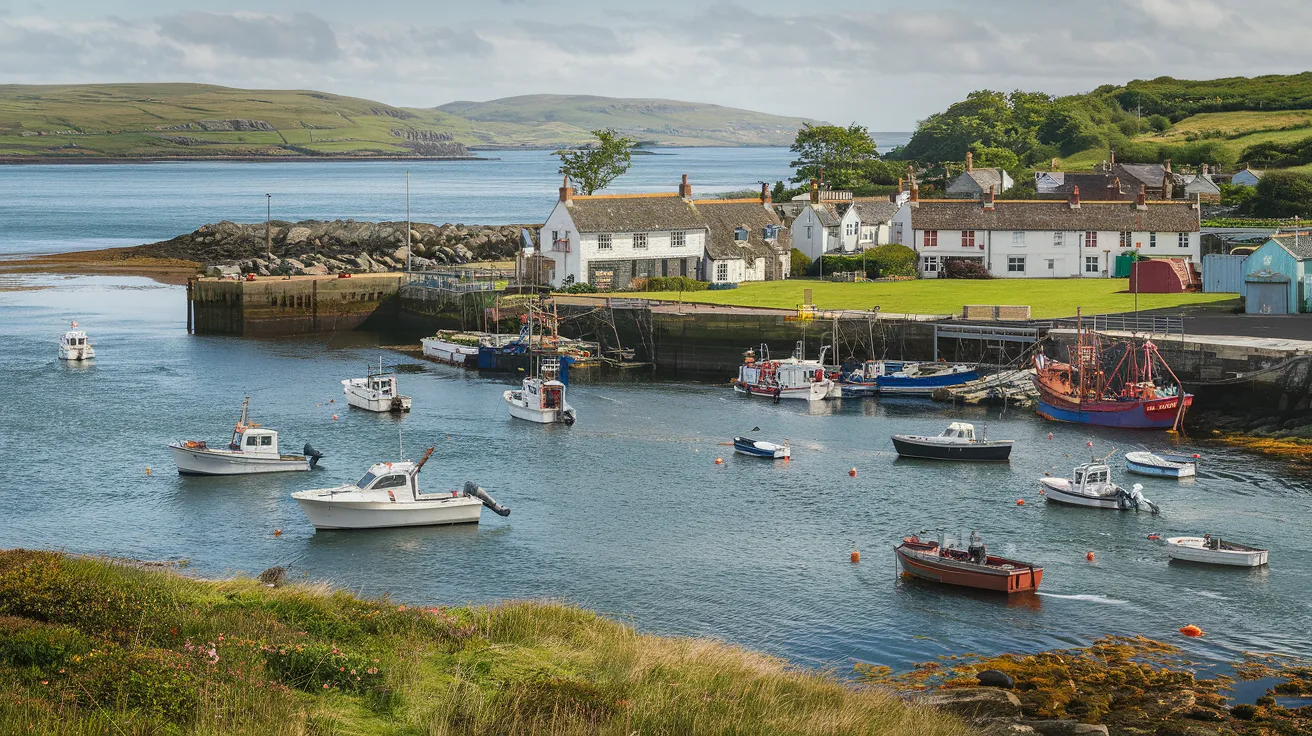Exploring Stronsay: The Island of Bays (Alternative)
May 27, 2025
Quick Navigation
- Stronsay's Stunning Beaches
- Archaeological Treasures
- Island Life and Community
- Wildlife Watching Opportunities
- Getting To and Around Stronsay
- Frequently Asked Questions
- What is Stronsay famous for?
- How do I get to Stronsay?
- Are there shops and places to eat on Stronsay?
- Is Stronsay good for walking or cycling?
Escape to Stronsay, the largest of Orkney's North Isles and an island defined by its breathtaking coastline. Aptly nicknamed the 'Island of Bays', Stronsay boasts miles of pristine white-sand beaches, vast dune systems, and a remarkably rich archaeological landscape stretching back over 5,000 years. With its low-lying, fertile land, abundant wildlife, and close-knit community, Stronsay offers a tranquil yet fascinating glimpse into Orkney's unique blend of nature, history, and island life. Discover why this captivating island deserves a place on your Orkney itinerary.
Stronsay's Stunning Beaches
Stronsay's coastline is its crowning glory, featuring some of the most beautiful and extensive beaches in Orkney:
- Cata Sand & Tresness: This vast tidal bay on the east coast is spectacular. At low tide, huge expanses of sand are revealed, perfect for walking. The area is flanked by Orkney's largest dune system at Tresness, a haven for wildlife and site of recent archaeological discoveries, including Neolithic houses and whale burials.
- Whitemill Bay: Located on the north coast, this sweeping crescent of white sand offers stunning views towards North Ronaldsay and is ideal for long, peaceful walks.
- Bay of Lopness: Famous for the wreck of the WWI German destroyer B98, which ran aground here in 1919 and is visible at low tide. The two-mile beach is backed by dunes.
- Doun Helzie: A more secluded beach on the southeast coast, reached via a walk through dunes, rewarding visitors with dramatic rock formations, arches, and caves accessible at low tide.
These beaches are not just beautiful; they are dynamic environments where history is constantly being revealed by the shifting sands and tides.
Archaeological Treasures
While perhaps less famous than the Mainland's Neolithic heartland, Stronsay possesses significant archaeological sites:
- Quoyness Chambered Cairn: Situated dramatically on the Elsness peninsula near Sty Wick beach, this impressive Maeshowe-type passage grave dates back to around 3000 BCE. Visitors can crawl through the low entrance passage into the high, corbelled main chamber and explore its side cells. Its scale and coastal setting make it one of Orkney's most atmospheric tombs.
- Scar Viking Boat Burial: Although the finds are now in the Orkney Museum, the site near the coast marks one of Britain's most important Viking discoveries – a 10th-century boat grave containing the remains of an elderly woman, a man, and a child, along with rich grave goods including a unique whalebone plaque.
- Coastal Erosion Sites: Ongoing archaeological work, particularly at Cata Sand, continues to uncover evidence of Neolithic and later settlements revealed by coastal erosion, highlighting the long history of human habitation shaped by the sea.
Exploring these sites offers a tangible connection to Stronsay's ancient past, from its earliest farmers to the era of Viking settlement.

Island Life and Community
Stronsay has a vibrant and active community of around 350 residents, a mix of multi-generational island families and newer arrivals.
- Settlements: Whitehall is the main hub with the ferry terminal, hotel, and shop. Lady Village hosts the school and Heritage Centre.
- Economy: Traditionally based on farming (Stronsay is known as 'Orkney's Granary'), supplemented by fishing (mainly shellfish), crafts, and tourism.
- Amenities: The island has well-stocked shops, a school, a doctor's surgery, a heritage centre, and various community groups.
- Events: Look out for the annual Stronsay Show in August and occasional community events like the Stronsay Soulka festival.
- Arts & Crafts: Several artists and craftspeople live and work on Stronsay; check the Orkney Craft Trail for details or visit the Stronsay Heritage Centre shop.

Wildlife Watching Opportunities
Stronsay's diverse habitats support a rich array of wildlife:
- Seals: Both Grey and Common (Harbour) seals are abundant around the coast. They can often be seen hauled out on beaches like Cata Sand or swimming in Whitehall harbour. Remember to keep a respectful distance.
- Birds: The island is a haven for birdlife. Mill Bay forms part of the Stronsay Bird Reserve, attracting numerous waders and wildfowl. Coastal walks offer chances to see seabirds like fulmars, kittiwakes, and terns. Rare migrants are often spotted, especially during spring and autumn.
- Otters: While elusive, otters frequent Stronsay's coastline; dawn and dusk provide the best chances for sightings in quiet bays.

Getting To and Around Stronsay
- Ferry: Orkney Ferries operate daily (except Sundays) roll-on, roll-off services from Kirkwall. The journey takes approximately 1.5 - 2 hours, sometimes stopping at Eday or Sanday en route. Vehicle booking is essential. (Orkney Ferries Website)
- Flight: Loganair provides short (10-15 minute) flights from Kirkwall Airport to Stronsay's airfield.
- Getting Around: The island's relatively flat terrain and quiet roads make it ideal for walking and cycling. Free bike hire is available via the Stronsay Development Trust (book ahead). Bringing a car on the ferry offers maximum flexibility.
To find relevant videos, search YouTube for "Exploring Stronsay Orkney" or "Vat of Kirbister".
Frequently Asked Questions
What is Stronsay famous for?
It's known as the 'Island of Bays' for its coastline, the Vat of Kirbister sea arch, its history as a major herring port, and the mystery of the Stronsay Beast.
How do I get to Stronsay?
By Orkney Ferries vehicle ferry from Kirkwall (approx. 1.5-2 hours) or by Loganair flight from Kirkwall Airport (approx. 10-15 minutes).
Are there shops and places to eat on Stronsay?
Yes, there are well-stocked shops in Whitehall. The Stronsay Hotel offers meals, and there's the Fish Mart Café. Check locally for current opening times.
Is Stronsay good for walking or cycling?
Yes, its relatively flat terrain and quiet roads, combined with stunning coastal scenery and beaches, make it excellent for both walking and cycling.
Stronsay offers a perfect blend of natural beauty, intriguing history, and authentic island life. Its stunning beaches are among the best in Scotland, while its archaeological sites provide a tangible link to thousands of years of human history. Whether you come for a day trip or a longer stay, Stronsay promises peace, space, and unforgettable Orcadian scenery. Find Orkney accommodation on Stronsay for a truly immersive island experience.

